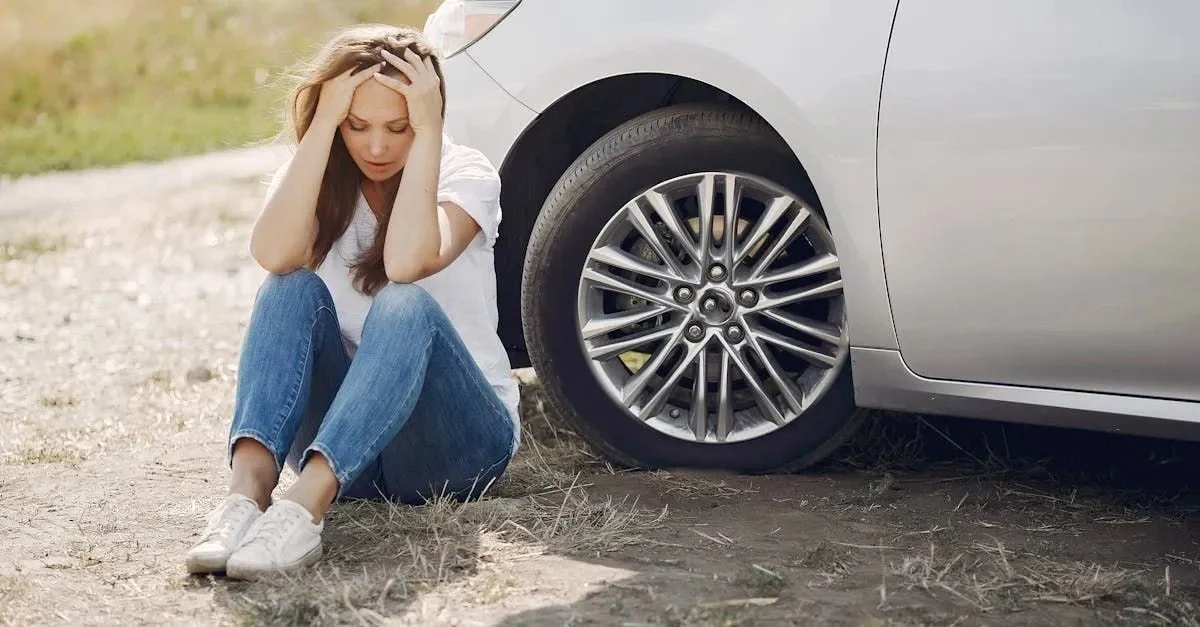How To Best Afford Gap Insurance
Gap Insurance: Dealer Add-On vs. Auto Insurance Policy — Which Is the Smarter Choice?
Buying a new car is exciting, but it also comes with financial risks. The moment you drive off the lot, your vehicle starts to depreciate in value. If your car is ever totaled or stolen, your standard auto insurance typically pays out the actual cash value, not the balance left on your loan or lease.
That’s where Gap Insurance comes in. Short for Guaranteed Asset Protection, it covers the “gap” between what your vehicle is worth and what you still owe your lender.
Why You’ll Hear About Gap Insurance at the Dealership
When you’re finalizing your purchase, the finance manager often offers Gap Insurance as an add-on.
Convenience: You can roll it right into your financing paperwork.
Cost: This convenience comes at a price. Dealers typically charge $400– $900 as a one-time fee, and because it’s financed, you’ll also pay interest on it.
Commitment: Once it’s bundled into your loan, you’re locked into that cost even if your balance drops faster than expected.
For example: if you buy a $30,000 SUV and total it a year later when it’s worth only $24,000, but you still owe $28,000, the dealer’s Gap Insurance would cover the $4,000 difference. Useful—but not always cost-effective.
Gap Insurance Through Your Auto Insurance Policy
What many car buyers don’t realize is that they can add Gap Insurance directly to their auto insurance policy.
Lower Cost: Most carriers charge just $20–$40 per year for the same protection.
Flexibility: You can add or remove the coverage as your loan balance changes.
Same Protection: It covers the same difference between your loan and your vehicle’s actual cash value.
In the SUV example above, adding Gap Insurance through your policy would provide the same $4,000 protection—but at a fraction of the cost.
Which Option Is Best?
If you like convenience and don’t mind paying more, the dealership option works.
If you want long-term savings, adding Gap Insurance to your auto policy is almost always the smarter financial choice.
At Sonon Insurance, you can explore whether adding Gap Insurance to your auto policy makes more sense for your wallet. Because protecting your vehicle, and your finances, shouldn’t cost more than it has to.
Gap Insurance: Dealer Add-On vs. Auto Insurance Policy — Which Is the Smarter Choice?
Buying a new car is exciting, but it also comes with financial risks. The moment you drive off the lot, your vehicle starts to depreciate in value. If your car is ever totaled or stolen, your standard auto insurance typically pays out the actual cash value, not the balance left on your loan or lease.
That’s where Gap Insurance comes in. Short for Guaranteed Asset Protection, it covers the “gap” between what your vehicle is worth and what you still owe your lender.
Why You’ll Hear About Gap Insurance at the Dealership
When you’re finalizing your purchase, the finance manager often offers Gap Insurance as an add-on.
Convenience: You can roll it right into your financing paperwork.
Cost: This convenience comes at a price. Dealers typically charge $400– $900 as a one-time fee, and because it’s financed, you’ll also pay interest on it.
Commitment: Once it’s bundled into your loan, you’re locked into that cost even if your balance drops faster than expected.
For example: if you buy a $30,000 SUV and total it a year later when it’s worth only $24,000, but you still owe $28,000, the dealer’s Gap Insurance would cover the $4,000 difference. Useful—but not always cost-effective.
Gap Insurance Through Your Auto Insurance Policy
What many car buyers don’t realize is that they can add Gap Insurance directly to their auto insurance policy.
Lower Cost: Most carriers charge just $20–$40 per year for the same protection.
Flexibility: You can add or remove the coverage as your loan balance changes.
Same Protection: It covers the same difference between your loan and your vehicle’s actual cash value.
In the SUV example above, adding Gap Insurance through your policy would provide the same $4,000 protection—but at a fraction of the cost.
Which Option Is Best?
If you like convenience and don’t mind paying more, the dealership option works.
If you want long-term savings, adding Gap Insurance to your auto policy is almost always the smarter financial choice.
At Sonon Insurance, you can explore whether adding Gap Insurance to your auto policy makes more sense for your wallet. Because protecting your vehicle, and your finances, shouldn’t cost more than it has to.
What is Auto Insurance Liability Coverage?
Learn more about auto liability insurance.
Understanding Auto Insurance Liability Coverage: Who It Protects and Why It Matters
When you’re behind the wheel, accidents can happen in the blink of an eye. That’s where auto insurance liability coverage steps in—it’s the foundation of every auto policy and, in most states, it’s required by law.
What Is Liability Coverage?
Liability coverage is designed to pay for injuries or property damage you cause to others in an accident. It doesn’t cover your own car or medical bills, that's what collision, comprehensive, or medical payments coverage are for. Instead, liability insurance ensures you can meet your financial responsibility if you’re at fault in a crash.
Who Does It Protect?
Other Drivers & Passengers – If you cause an accident that injures someone, your liability coverage helps pay their medical expenses.
Property Owners – Whether it’s another vehicle, a fence, or even a building, liability insurance helps cover the cost of repairs or replacement.
You – While it doesn’t pay for your own damages, liability coverage protects you financially by covering claims, lawsuits, or settlements so you don’t have to pay out-of-pocket.
Why It Matters
Without liability coverage, one accident could result in devastating costs, lawsuits, or even loss of assets. Having enough liability protection means peace of mind that you, your family, and your financial future are safeguarded. Schedule a meeting to review your plan with a qualified agent.
What Is Tort On My Auto Policy?
Learn about tort insurance.
Full Tort vs. Limited Tort: What’s the Difference and Where Is It Offered?
When shopping for auto insurance, you’ll come across many coverage options that affect how protected you are after an accident. One of the most important—and often misunderstood—choices is whether to select full tort or limited tort coverage. This option doesn’t exist in every state, but in places where it does, your decision can significantly affect your legal rights and potential compensation after a crash.
What Is Full Tort?
Full tort coverage gives you unrestricted rights to sue the at-fault driver for both economic damages (like medical bills, lost wages, and property damage) and non-economic damages (such as pain and suffering).
Pros: Maximum protection of your legal rights. If you’re seriously injured, you can seek compensation not only for your financial losses but also for the emotional and physical toll.
Cons: It usually costs more in insurance premiums.
Full tort provides broader legal options, but you’ll pay extra premium for that peace of mind.
What Is Limited Tort?
Limited tort coverage is a cost-saving option that reduces your premium but limits your ability to sue for non-economic damages. Under limited tort, you can generally recover only economic damages—unless your injuries meet the state’s definition of “serious injury” (often something like permanent disfigurement, loss of a body function, or death).
Pros: Lower insurance premium, which can save you money upfront.
Cons: In many cases, you can’t seek compensation for pain and suffering, even if the accident wasn’t your fault.
This option works well for drivers who want to save money and are comfortable with a more limited right to sue.
Which States Offer Full and Limited Tort Options?
Not every state gives you this choice. Currently, Pennsylvania is the most notable state that offers drivers the ability to choose between full tort and limited tort on their auto insurance policies.
Other states with similar systems include:
New Jersey – Drivers can choose between “limited right to sue” and “unlimited right to sue.”
Kentucky – Offers a similar tort option under its “choice no-fault” laws, where drivers can reject limitations on lawsuits.
Most states operate under either traditional tort systems (full right to sue) or no-fault systems (lawsuits restricted unless serious injury thresholds are met). But Pennsylvania, New Jersey, and Kentucky stand out for giving drivers a clear, upfront choice between limited and full tort.
Which Option Is Right for You?
The right choice depends on your priorities:
If keeping costs low is your main concern, limited tort may make sense.
If protecting your legal rights and ensuring maximum compensation after an accident is important, full tort is usually the better choice.
Since the cost difference can vary depending on your insurer and location, it’s a good idea to request quotes for both options and weigh the savings against the potential risk. Schedule a call or virtual meeting with us for assistance with your auto insurance.
How to Handle an Auto Accident
Learn how to handle an auto accident.
How to Handle an Auto Accident: A Step-by-Step Guide
Auto accidents can be stressful and overwhelming, regardless of the severity. Knowing what to do immediately after an accident can help you stay calm, ensure everyone’s safety, and protect your interests. Here’s a step-by-step guide on how to handle an auto accident effectively.
Step 1: Ensure Safety and Assess Injuries
1. Check for Injuries: Immediately check yourself and any passengers for injuries. If anyone is injured, call 911 for medical assistance. Do not attempt to move injured individuals unless they are in immediate danger (e.g., from oncoming traffic or a fire).
2. Move to Safety: If the accident is minor and your vehicle is drivable, move it to the side of the road to avoid obstructing traffic. Turn on your hazard lights to alert other drivers. If the vehicle cannot be moved, stay inside with your seatbelt fastened until help arrives.
Step 2: Call the Authorities
1. Contact the Police: Even for minor accidents, it’s important to have a police report. The report provides an official record of the accident, which can be valuable for insurance claims. When the police arrive, provide an accurate account of what happened, but avoid admitting fault.
2. Gather Information: While waiting for the police, collect information from the other driver(s) involved, including:
- Names and contact details
- Insurance company and policy number
- Driver’s license number
- Vehicle make, model, and license plate number
Step 3: Document the Scene
1. Take Photos and Videos: Use your smartphone to take pictures and videos of the accident scene, including:
- Damage to all vehicles involved
- Your injuries and those of your passengers
- Traffic signals and road conditions
- Any relevant skid marks or debris
2. Identify Witnesses: If there are any witnesses to the accident, ask for their contact information in case their testimony is needed later.
Step 4: Report the Accident to Your Insurance Company
1. Contact Your Insurer: Notify your insurance company about the accident as soon as possible. Provide them with all the information and documentation you have collected.
2. Understand Your Coverage: Review your insurance policy to understand your coverage and how it applies to the accident. This includes liability, collision, and comprehensive coverage details.
Step 5: Seek Medical Attention
1. Visit a Doctor: Even if you feel fine, it’s wise to seek medical attention after an accident. Some injuries may not be immediately apparent, and a medical evaluation can ensure your health and well-being.
2. Document Medical Expenses: Keep records of all medical visits, treatments, and expenses related to the accident. This documentation will be important for insurance claims or potential legal action.
Step 6: Keep Detailed Records
1. Maintain an Accident File: Create a file to store all documents related to the accident, including:
- Police reports
- Insurance correspondence
- Medical records
- Repair estimates and bills
2. Track Communication: Keep a log of all conversations with insurance companies, medical providers, and any legal representatives involved in your case.
Conclusion
Being involved in an auto accident can be a daunting experience, but knowing how to respond can make the process smoother and less stressful. By following these steps, you can protect yourself, ensure everyone’s safety, and take the necessary actions to handle the aftermath of an accident effectively. Remember, staying calm and organized is key to managing the situation and safeguarding your rights.





